 Open Access
Open Access
ARTICLE
Heart Disease Prediction Using Convolutional Neural Network with Elephant Herding Optimization
School of Information Technology and Engineering, Vellore Institute of Technology, Vellore, 632014, India
* Corresponding Author: R. Subhashini. Email:
Computer Systems Science and Engineering 2024, 48(1), 57-75. https://doi.org/10.32604/csse.2023.042294
Received 25 May 2023; Accepted 24 July 2023; Issue published 26 January 2024
Abstract
Heart disease is a major cause of death for many people in the world. Each year the death rate of people affected with heart disease increased a lot. Machine learning models have been widely used for the prediction of heart disease from the different University of California Irvine (UCI) Machine Learning Repositories. But, due to certain data, it predicts less accurately, whereas, for large data, its sub-model deep learning is used. Our literature work has identified that only traditional methods are used for the prediction of heart disease. It will produce less accuracy. To produce more efficacy, Euclidean Distance was used in this work for data pre-processing that will clean the unwanted data and metaheuristics bio-inspired algorithm such as elephant herding optimization (EHO) is utilized for feature selection. Then, this article proposes deep learning models such as convolutional neural network (CNN) and Inception-ResNet-v2 model for the prediction of heart disease from the benchmark dataset such as the UCI Cleveland heart dataset. Finally, the proposed hybrid model utilizes a convolutional neural network with an Inception-ResNet-v2 in the third layer of the architecture that classifies heart disease with the promising result of 98.77%, accuracy for the Cleveland dataset which outperforms all the other state-of-the-art methods. In future work, this model can be used to predict other diseases such as cancer, brain tumor and COVID-19 in available datasets for the betterment of human lives.Keywords
The heart, which controls blood flow, is a vital component of the human body. All the body’s organs receive oxygen and energy from it as well. An abnormal blood flow in the body brought on by a heart infection can be fatal to human life. There are two primary groups of risk factors for heart infections. One is based on a person’s family history, age, sex and the other is based on their habits, such as smoking, drinking alcohol and being physically inactive for an extended period. Heart disease has significantly increased the death rate during the last 20 years. Cardiomyopathy, coronary artery disease, heart valve disease, heart arrhythmias, heart failure and congenital heart disease are the various forms of heart disease. According to WHO data [1], heart disease affects 17.9 million individuals worldwide and is the most common non-communicable disease. According to recent statistics, China is the top nation with a high death rate among those who have heart disease in 2019. Due to their internal organ failures, heart disease [2] is also elevated to the leading complication for other human-killing diseases. Additionally, people of various ages, from 30 to 70, are impacted by it. For many people around the world, early detection and prediction of heart disease are essential. Around 19 million deaths worldwide in 2020 were linked to heart disease, an increase of 18.7% from 2010. Heart attacks are significant medical conditions that occur when the blood supply to the heart muscle is suddenly interrupted and damages the heart muscle. It used to be quite rare for someone under the age of 40 to get a heart attack, but now people under 40 make up one in every five heart attack patients. Another unsettling data to highlight the problem is as follows: A heart attack is more likely to occur in your 20s or early 30s. The number of heart attacks among people in this young age range increased by 2% year between 2000 and 2016. Many research findings show that features or attributes with continuous data are used for the prediction or detection of heart disease. But, to ensure good accuracy in predicting it, many machine learning and deep learning models have been utilized. In this work, the following datasets are considered for the analysis of heart disease from UCI Cleveland.
Machine learning [3] is a mechanism of learning itself from a certain experience. It aims to mimic human intelligence with computer machines. Based on the input it will do the task and produce the output. It can be used in several applications such as image recognition, speech recognition and prediction of human-related issues such as traffic, healthcare, climate and natural disasters. Out of these applications, our major area is healthcare prediction. It is a necessary one nowadays due to a lot of new diseases spreading and infecting many numbers of people around the globe. Machine learning is used in a variety of applications for the prediction of diseases such as heart, cancer and kidney diseases. Diseases can be split into two ways communicable and non-communicable diseases. Machine learning model accuracy is satisfactory for some datasets but not for other large data sets in the medicinal arena. So, the deep learning model is now used widely for the applications utilized by machine learning and AI.
A branch of machine learning called “deep learning” [4] has become well-known worldwide, especially in the field of disease classification. The history of deep learning models was created with the powerful neural network architecture which has a neuron concept and the first invented model is perceptron by Frank Rosenblatt in the year 1957. The neural network has several types, feedforward neural network, recurrent neural network, radial basis function neural network and modular neural network. Deep learning improved a lot with the support of the neural network, so it is now a promising model for many businesses field. It is also a major model for the healthcare sector with more potential to improve human lives with more accurate prediction, detection and diagnosis of various diseases such as heart, cancer and kidney. This paper, mainly focused on major human diseases such as heart disease prediction using machine learning and deep learning.
Overfitting and underfitting are common issues when creating prediction models using existing machine learning methods. Overfitting happens when a model is overtrained and overly complex on a limited dataset, leading to strong performance on training data but poor generalization to new data. The likelihood of bias and discrimination is a serious weakness in existing systems. When compared to other machine learning classifiers, neural networks fared better. Some of the data pre-processing that is generally involved with machine learning is eliminated with deep learning. These algorithms can handle text and visual data that is unstructured and automate feature extraction, reducing the need for human specialists. Graphics processing unit (GPU) computers are optimal for Deep Learning’s [5] calculations. Parallel-computing operations, including matrix multiplication, activation functions, and convolutions, make GPUs useful for many fundamental DL techniques. The bandwidth is greatly enhanced with stacked memory and modern GPU models. As a result, we know that deep learning executed on a GPU yields accurate results and greatly simplifies the computing process. The proposed approach is efficiently utilized in healthcare environments.
Recently in various optimization research, metaheuristics bio-inspired algorithm has been widely applied. Metaheuristics bio-inspired algorithm is also used as feature selection that is utilized in the proposed work. The literature survey on various diseases with the existing model in connection with heart disease is also presented in Section 2.
The main contribution of this work is:
• First, the data is pre-processed by the traditional Euclidean Distance method, followed by the feature selection process with the elephant herding optimization (EHO).
• Then, the popular classifier convolutional neural network with an Inception-ResNet-v2 is utilized for the classification of heart disease from the well-known UCI data repository such as the Cleveland dataset.
• The proposed hybrid model has achieved significant classification performance with more robust results when compared with other meta-heuristic and deep learning models.
The following section of this paper continues with a literature survey on existing machine learning and deep learning models used for heart disease classification in Section 2. The proposed hybrid deep learning model for heart disease prediction is described in Section 3. In Section 4, experimental results are discussed with tabulation and diagrams. Finally, Section 5 presents the future scope of predicting heart disease using deep learning embedded hybrid models to achieve optimal accuracy.
Several studies have documented the development of deep learning and machine learning models with the potential to diagnose cardiac disease to improve performance while making a heart disease prediction. Researchers frequently assess the effectiveness of prediction models using the publicly accessible heart disease datasets Cleveland, Statlog and Framingham. This section reviews recent research that is pertinent to the current topic.
Gudadhe et al. [6] have established a diagnosis system for heart disease identification using a multilayer perceptron and support vector machine model and achieved an accuracy of 80.41%. They used backpropagation for training MLP and classified heart disease into five classes, 0 represents the absence of disease and 1, 2, 3, 4 represent four types of heart disease.
Kahramanli et al. [7] have developed a heart disease profiling model by applying a hybrid artificial neural network with an addition of fuzzy logic and secured a performance of 86.8%. They have used k-fold cross-validation for the classification purpose and additionally, they have tried this model for the diabetes dataset too and attained a performance of 84.24%.
Das et al. [8] have proposed an ensemble-based diagnosis system using an artificial neural network for heart disease and obtained an accuracy of 89.01%. They have used SAS-based software for the diagnosis of heart disease and achieved the metrics of sensitivity and specificity with 80.95% and 95.91%.
Olaniyi et al. [9] have established a three-phase model with an artificial neural network for heart disease detection and attained an accuracy of 88.89%. They have designed an intelligent system with a support vector machine and feed-forward multilayer perceptron for the prevention of misdiagnosis which is the major error done by many doctors.
Liu et al. [10] have developed the heart disease identification model using relief and rough set techniques and got a maximum performance of 92.59% by the jackknife cross-validation scheme. They have done this in two phases, first with data discretization, feature extraction and feature reduction using a heuristic approach. Second, an ensemble classifier of C4.5 is used for classification purposes.
Geweid et al. [11] have proposed a heart disease labeling model by utilizing an advanced support vector machine-based optimization hybrid method with a nonparametric algorithm for training and obtained an accuracy of 94.97%. They have used a dual SVM model to detect heart failure disease from ECG signals data that results in increased reliability and high accuracy for the identification of heart disease.
Khan et al. [12] have developed an IoMT framework for the detection of heart illness combining modified salp swarm optimization (MSSO) and an adaptive neuro-fuzzy inference system (ANFIS) to increase the precision of prediction. They have used the Levy flight method and enhanced the search capabilities. The author’s prediction model achieves a higher accuracy of 99.45 when compared to existing methods.
The short survey on heart disease prediction using artificial intelligence models is shown in Table 1.
From the existing literature survey on heart disease prediction, much research has been found on machine learning and deep learning with traditional feature selection and extraction methods. Several studies have used artificial neural network (ANN), deep neural network (DNN), random forest (RF), decision tree (DT), support vector machine (SVM), convolutional neural network (CNN) and k-nearest neighbors (KNN) models for the classification. Most study results in convergence and local optima problem in the prediction of heart disease with machine learning and deep learning models. The significance of data quality comes from the fact that effective decision-making is reliant on it. Even minor changes in the dimensions of the data might have a major impact on the information for making judgments. Therefore, it is advantageous for enterprises to use hybrid technologies that improve the results, as well as verified studies on the selection and evaluation of computational learning approach characteristics. Bio-inspired meta-heuristics algorithms have also been used for selecting the optimal features. But still, it results in slow convergence and local optimum. So, from the above survey, this article added a metaheuristics-based algorithm for the selection of optimal features. The planned research employed to predict heart disease is described in more detail in the following section.
Several studies have been done by numerous authors who predict cardiac disease by implementing hybrid deep learning approaches and additional research in the pre-processing stage research is still insufficient to increase the heart disease prediction accuracy rate. To overcome these difficulties and produce the best prediction outcomes, the hybrid model concept which depends on the differential modeling concept of nonlinear and linear components had been introduced. Additionally, it is believed that employing several or hybrid learning algorithms will produce improved prediction and performance when compared to creative learning methods. The hybrid model is the most popular and well-known model for prediction paradigms for the reason mentioned above. This article has proposed hybrid deep-learning models for the prediction of heart disease. This hybrid system is categorized into three steps: data collection, data pre-processing and model construction. Fig. 1 shows the workflow diagram of the proposed model. The dataset description is explained in Section 3.1, which includes the analysis of a popular benchmark dataset used in this study. Euclidean Distance is utilized for data pre-processing. The data is cleaned using this method. A metaheuristic-based algorithm such as elephant herding optimization (EHO) is used for the feature selection. After the identification of the best features, the selected features are passed to the deep learning models for the classification of the output through a convolutional neural network (CNN) and an Inception-ResNet-v2 model.

Figure 1: The workflow diagram of the proposed model
The proposed model utilized the following three datasets for the prediction of cardiac diseases, such as UCI Cleveland [16]. The Cleveland dataset was taken from the Cleveland clinic foundation. It contains 76 attributes, but the most widely selected features are a subset of 14. Most of the ML researchers used the Cleveland database. The next sections will explain the data pre-processing, feature selection and prediction methods for the presence or absence of heart disease. Table 2 represents the descriptive statistics of the Cleveland dataset values.

To improve the quality of the data, pre-processing is used, such as handling missing values and converting the kind of feature using various techniques. The various records shown in the above table of heart disease information are pre-processed and data is cleaned by Euclidean Distance to identify the correct data else it will impact our predictive model. The distance between two points is known as the Euclidean Distance. The length of a segment connecting the two places is calculated to locate the two spots on a plane. It provides the straight-line distance or the separation between two places. In a two-dimensional plane, let us say that
where
3.3 Feature Selection by Elephant Herding Optimization
In this article, elephant herding optimization (EHO) [17] was used for the feature selection task. In machine learning, feature selection is seen as a pre-processing step. Selecting the most relevant feature subset from a complicated or huge dataset is one of the most difficult challenges. Finding hidden patterns or important knowledge in enormous amounts of data has become a critical issue. It has been proved that feature selection successfully removes unnecessary features. It can also increase the performance of classifiers, lower the computational cost and minimize the amount of storage required. Data has grown in recent years, in terms of both the number of attributes/features and the number of occurrences. Feature selection has shown to be useful in medical categorization and diagnostic aid. An important populace-based technique known as elephant herding optimization (EHO) was developed to solve complex optimization problems. The elephants in each group are informed by their current location and matriarch through group notifying the operator in this technique. It is created as a result of the disentangling handler’s success, which can improve the population variety during the subsequent search phase. With some methodological improvements, EHO keeps exploitation and exploration in synchronization effectively. It is frequently utilized in applications such as energy-based localization, distributed systems, static drone deployment, wireless sensor networks and multilevel image thresholding. The mathematical models of EHO start with the two basic ideas and then introduce the velocity strategy and separation strategy and apply the elitism strategy to the complete algorithm. Each elephant continues the clan update operator according to its current location in the herd and the location of the matriarch.
As a result, for the elephant
where
In Eq. (2), the matriarch’s position has not changed. It can be updated as follows for the fittest individual:
where
The male elephants live alone after being separated from the herd. The worst elephant in each clan is supposed to be replaced by a separation operator in the EHO algorithm. The procedure can be shown in Eq. (5).
where
This research explores the hybrid technique, combining EHO with deep learning models. The key contribution of this research is the proposal of an EHO performance. In this hybrid technique, the metaheuristic bio-inspired methodology is used to find the best feature subset that increases heart disease classification accuracy while reducing feature subset length. The flowchart representation of EHO is shown in Fig. 2.

Figure 2: Flow chart of elephant herding optimization algorithm
3.4 Convolutional Neural Network
A convolutional neural network (CNN), often termed as ConvNet, appears to be the best framework for medical image processing. The architecture of a CNN can help with multilayer deep hierarchical learning. CNN’s early layers may retrieve minimal data whereas the deep layers could retrieve increased feature representations, which are then merged to reliably pinpoint significant locations. The neurons in the ConvNet layers are structured in three measurements: height, breadth and depth. The fundamental CNN architecture is shown in Fig. 3. The CNN architecture is made up of an input layer, a convolutional layer, a rectified linear unit (ReLu), a pooling layer, a fully connected layer and an output layer.

Figure 3: CNN architecture
To create a comprehensive CNN architecture, several layers are piled one on top of the other. The convolutional, ReLU and pooling layers are used to extract features. In the fully linked layer, classification takes place. In a deep neural network, identifying individual layers and associated connections is more difficult than executing a pre-trained general structure. The identification of the connection between layers can be enhanced by building a final neural network model. The model grows better perceptive to emerging themes and works properly in a much more substantial way since it takes out extracted attributes. The early detection of cardiac illness may be made easier with the help of the neural network. The use of pre-trained neural network models for handling, processing, fragmentation and categorization of radiological pictures of heart disease-affected individuals has been made easier because of transfer learning. Additionally, several neural networks have grown in response to the current task.
In this work, the input consists of one-dimensional data with
From the set of features, the new feature map
where
From (7), the generated feature map is
where
The workflow representation of the Inception-ResNet-v2 model is shown in Fig. 4. A convolutional neural network called Inception-ResNet-v2 is created by combining the Inception structure and the Residual connection. Multiple convolutional filters of various sizes are mixed with residual connections in the Inception-ResNet block. In addition to avoiding the degradation issue brought on by deep structures, the inclusion of residual connections shortens training time. This article has classified the UCI heart disease dataset into normal (absence of heart disease) and abnormal (presence of heart disease) using an Inception-ResNet-v2 model. The data is randomly utilized with 80% for training and 20% for testing activity. In Fig. 4, the evaluation goes on until the assessed output is acquired. The method of training is continued until all the training samples are applied consecutively resulting in a possible minimum value of the loss function. After acceptable training process completion, the model is tested with the leftover 20% of data.
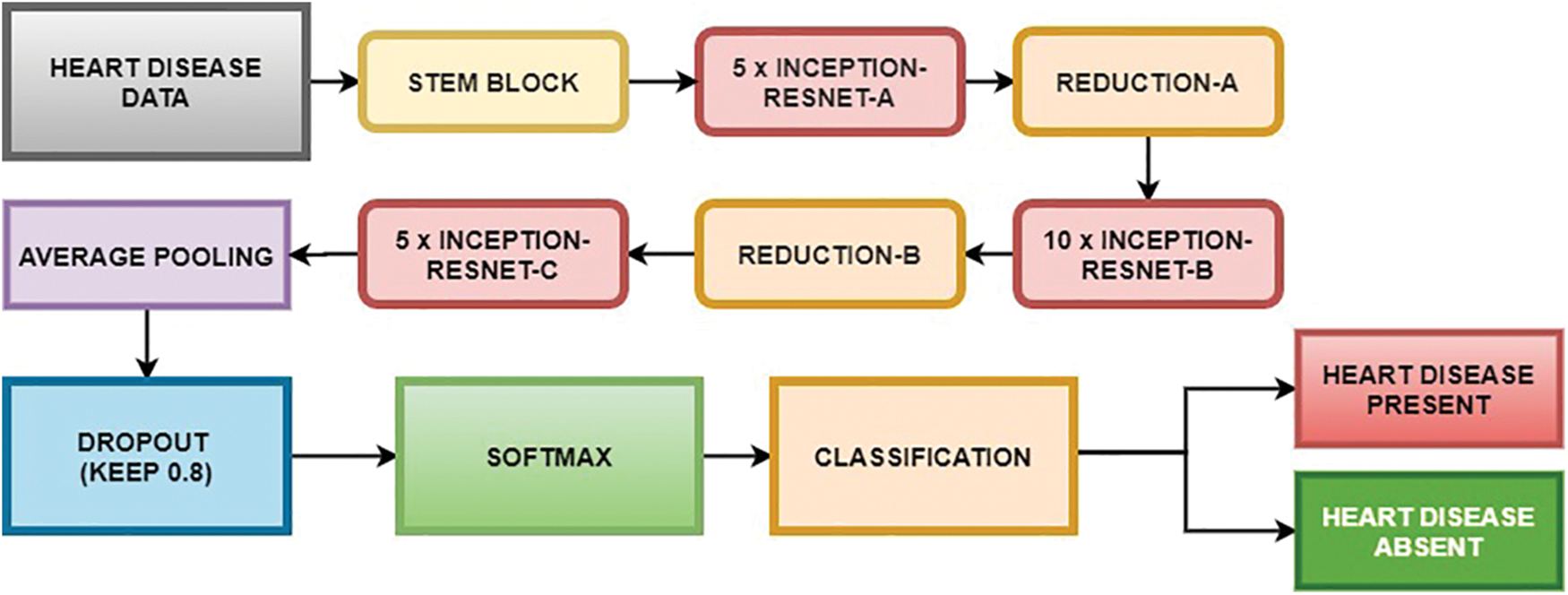
Figure 4: The basic architecture of Inception-ResNet-v2
This section exhibits the experimental result for the prediction of heart disease using hybrid deep learning models with an optimization method. The proposed hybrid model is shown in Fig. 5. After data pre-processing, from the UCI Cleveland heart disease dataset where the categorical attributes are combined for the recognition of the best features for the accurate prediction of heart disease. The prediction model starts with the input data that is loaded into the machine. The data is pre-processed by Euclidean Distance. Then, it is split into 80–20 percent for training and testing. Then, split the trained data into validation and optimize the parameter using metaheuristics bio-inspired algorithm, Elephant Herding Optimization for feature selection. The next step is to pass the selected features into the trained deep learning models such as CNN with an Inception-ResNet-v2 [18] which used the concept of convolutional layer, max-pooling layer, dropout, IRv2 to the fully connected layer and dense with softmax activation function and classified the output into heart disease present or absent. Then, finally, the prediction of heart disease is measured with performance metrics such as accuracy and time complexity. The correct classification of several cases in the dataset depends on accuracy. The equation used to determine accuracy was represented as

Figure 5: The hybrid deep learning model architecture
This article has suggested an elephant herding optimization approach using a hybrid CNN with an Inception-ResNet-v2 classification model scheme for the categorization of medical abnormalities in heart illness. The EHO technique was used in the suggested scheme to determine the two critical parameters as well as the best feature subset dynamically and concurrently for the hybrid deep learning model. This is the first time, to our knowledge, that the enhanced EHO technique has been used to train the hybrid model. This article has conducted studies on two typical illness diagnosis difficulties to validate the suggested approach and it was then effectively applied to forecast heart disease patients. The experimental findings reveal that the proposed EHO improved the hybrid model’s approach that outperforms previous hybrid methods based on meta-heuristics. This means that combining EHO with convolutional neural networks and the Inception-ResNet-v2 model can produce reliable and consistent results for the heart disease categorization issues studied.
This section explains the results obtained using the proposed model and a comparison of the existing work for the prediction of heart disease. The categorical data is used in the prediction of heart disease since it is more structured and inherently embed with medical observation. In addition to preprocessing task, this work has also performed K-fold cross-validation to improve the performance of the prediction accuracy. All these records have been utilized with K-fold cross-validation for the implementation part. Table 3 shows the K-fold cross-validation performance of the Cleveland dataset with a K value of 10. The data is divided into 10-folds resulting in 10 subsets, which will use 9-fold for training and 1-fold for testing. Tables 4–6 will show the performance metrics values of the proposed model such as epochs and accuracy with time complexity. Table 4 shows the CNN model performance where it starts with epoch size 109 with an accuracy of 76.45 and ends with epoch size 152 with an accuracy of 97.14, respectively. Table 5 shows the ResNet model performance where it starts with epoch size 219 with an accuracy of 77.85 and ends with epoch size 387 with an accuracy of 97.47, respectively. Table 6 shows the Inception-ResNet-v2 model performance where it starts with epoch size 219 with an accuracy of 91.72 and ends with epoch size 292 with an accuracy of 98.77, respectively. When compared with the time complexity of the proposed work, the Resnet model attains good accuracy at a shorter time at 220 m/s whereas CNN attains a high-performance accuracy at 859 m/s and Inception-ResNet-v2 at 579 m/s. The Big





Figure 6: Performance metrics of the CNN model in terms of accuracy vs. time complexity
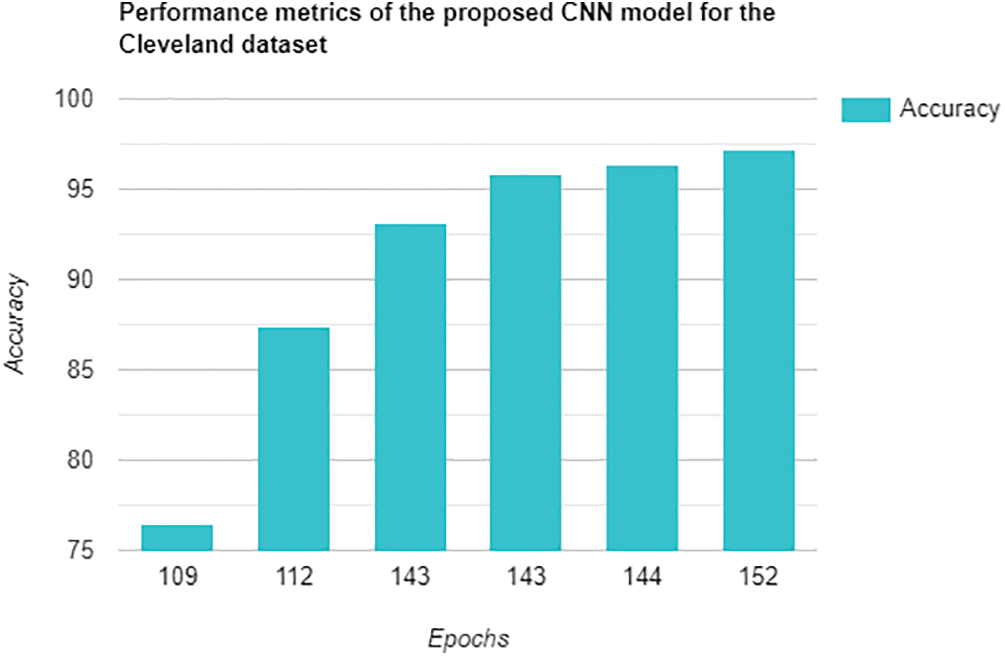
Figure 7: Performance metrics of the CNN model in terms of epoch vs. accuracy

Figure 8: Performance metrics of the ResNet model in terms of accuracy vs. time complexity
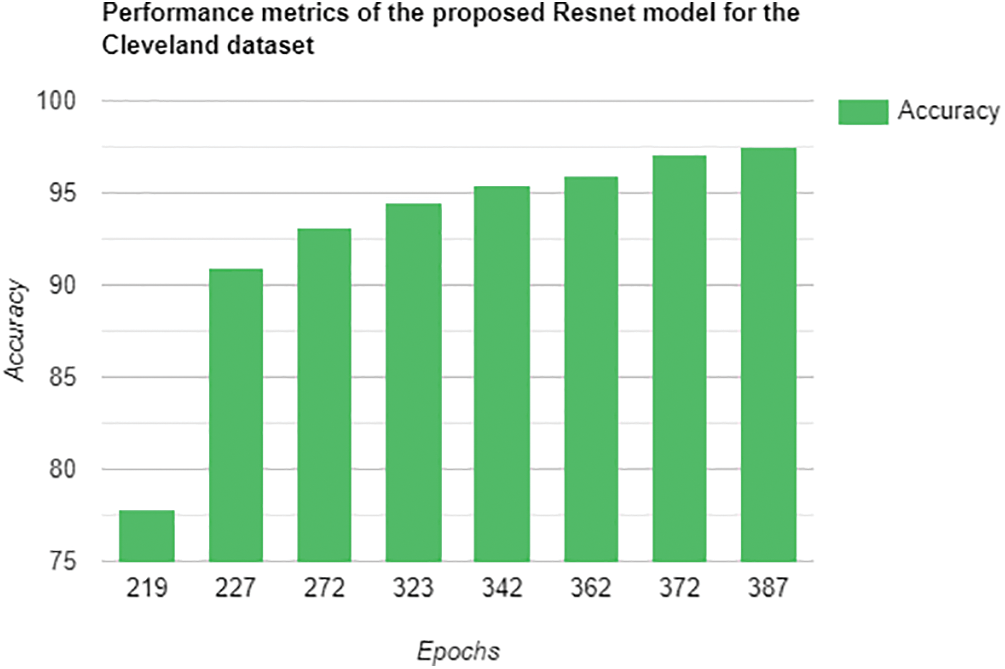
Figure 9: Performance metrics of the ResNet model in terms of epoch vs. accuracy
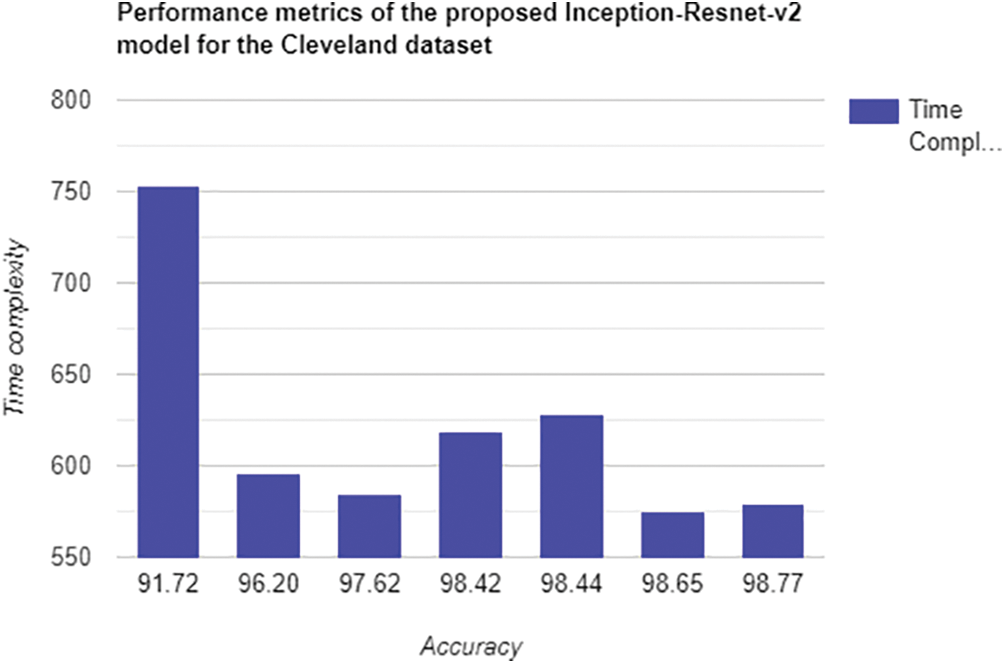
Figure 10: Performance metrics of Inception-ResNet-v2 model in terms of accuracy vs. time complexity
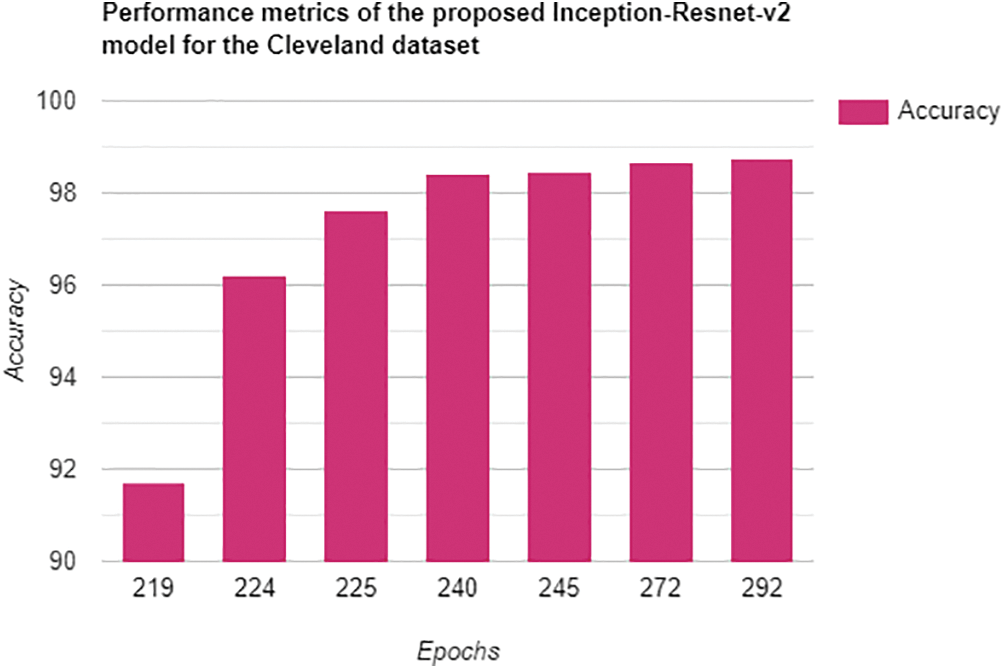
Figure 11: Performance metrics of Inception-ResNet-v2 model in terms of epoch vs. accuracy
It is shown that from Table 7 and Fig. 12, the proposed model has achieved better in all the performance metrics such as precision, sensitivity, specificity, F1-score, ROC and accuracy when compared with other models.

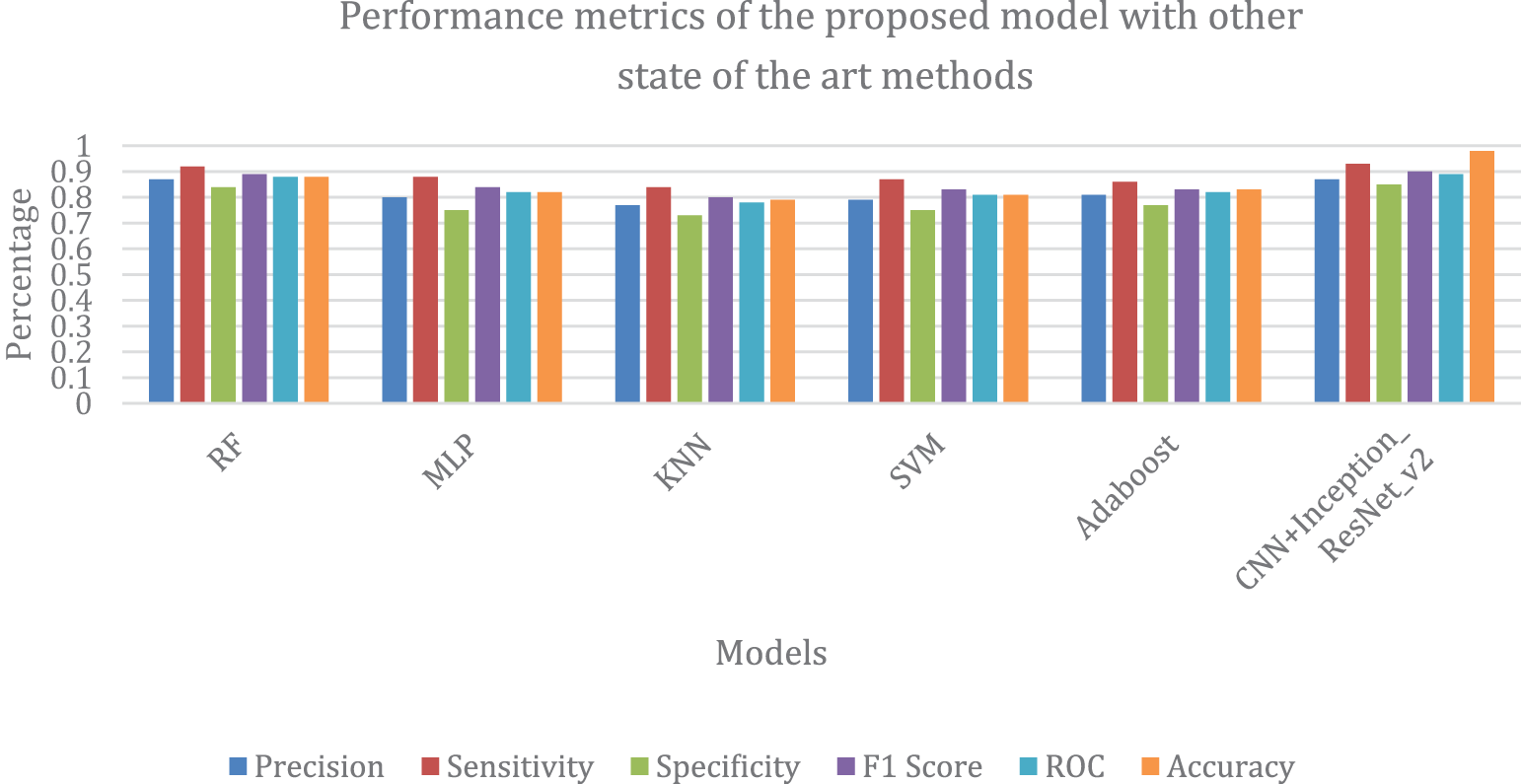
Figure 12: Comparison of the performance metrics of the proposed model in terms of precision, sensitivity, specificity, F1-score, ROC and accuracy
It is shown that from Table 8 and Fig. 13, the proposed model elephant herding optimization and convolutional neural network with the Inception-ResNet-v2 model has achieved better accuracy when compared with other work. From Table 8, Sibo Prasad Patro et al. have designed a framework based on different classifiers with a new feature selection approach of a salp swarm optimized neural network and attained an accuracy of 86.7% in the prediction of heart disease. They have additionally compared their results with other classifiers such as KNN, NB and SVM, respectively. Using the publicly accessible Cleveland Heart Disease dataset, the previous result is compared with several intelligent systems constructed with ML algorithms for predicting whether a person is likely to acquire heart disease. They also discussed the use of a particle swarm optimization (PSO) algorithm to train a multilayer perceptron (MLP) for the diagnosis of heart disease. The algorithms are tested and judged based on their categorization metrics. They have obtained an accuracy of 84.61% with their proposed model MLP-PSO. Most of the existing work is performed with traditional feature selection methods such as principal component analysis, Pearson correlation coefficient, least absolute shrinkage, selection operator, and chi-Squared. In this work, Euclidean Distance and metaheuristics bio-inspired algorithms such as elephant herding optimization were used for the feature selection process. Additionally, this article has utilized the EHO algorithm to perform faster convergence and reduce local optima problems. Earlier work has concentrated on machine learning and deep learning models such as k-nearest neighbors, logistic regression, autoencoder, convolutional neural network, deep neural network, artificial neural network, support vector machine, naïve Bayes and ensemble models. In this work, the hybrid deep learning models were utilized for the prediction of heart disease and it attains better optimal accuracy when compared with other results.
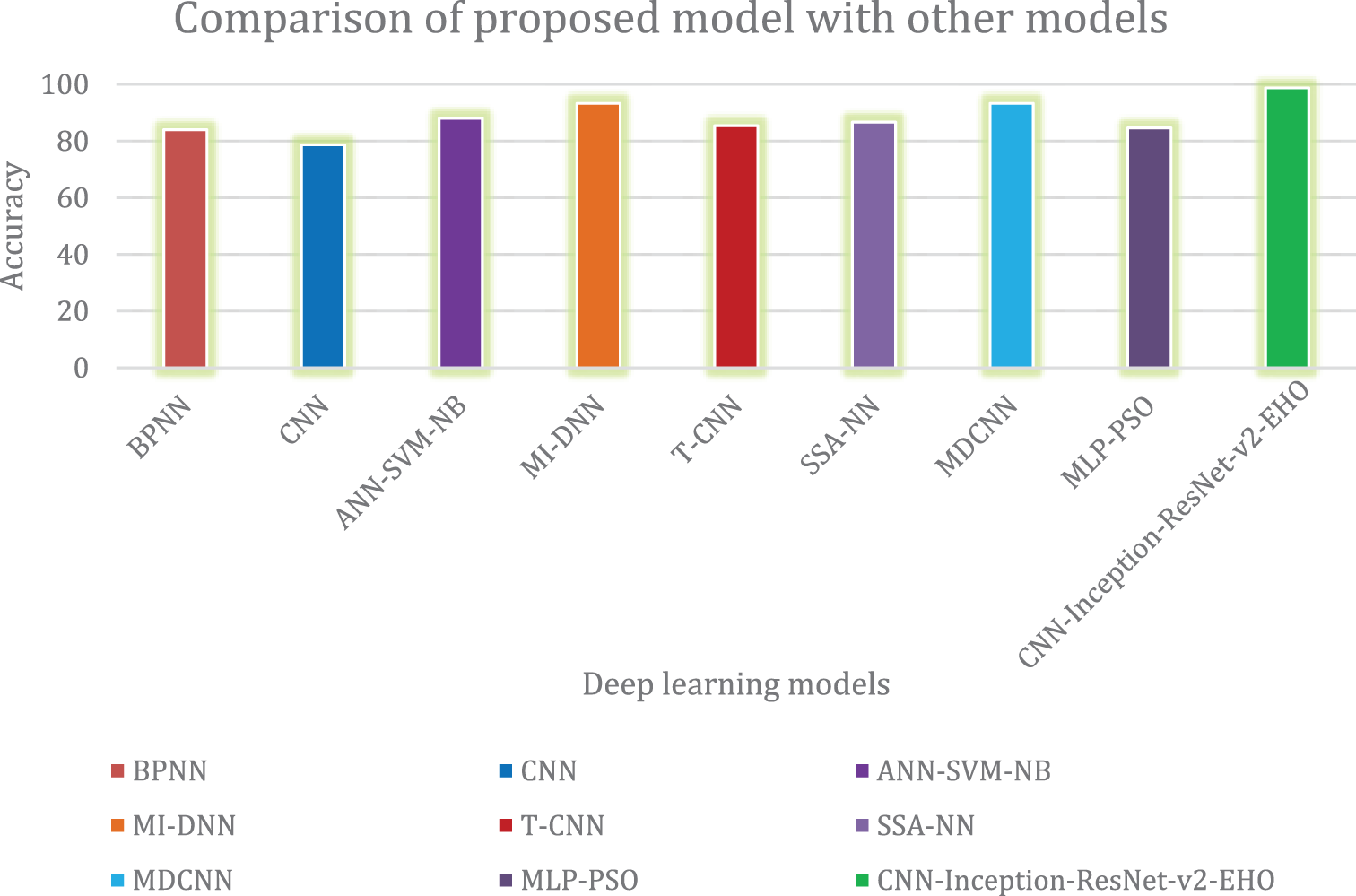
Figure 13: Comparison of the proposed model with other state-of-the-art methods
4.2 Discussions and Future Work
In this work, the elephant herding optimization is used for the feature selection and optimization for the prediction accuracy of heart disease. Hybrid deep learning models such as convolutional with an Inception-ResNet-v2 are used to predict heart disease presence or absence. The proposed model produces more efficacy when compared with other models. There are some advantages and disadvantages to the proposed work. The advantages are fast convergence and solving local optima problems. The disadvantages are, that the proposed work is executed in existing UCI datasets. The fact that CNNs need a lot of labelled data to train properly, which can be expensive and time-consuming to gather and annotate, is one of their key drawbacks. Another drawbacks of our proposed Inception-ResNet-v2 model is that, because of the complex layout of the internal modules, training and testing run times are roughly longer than for other models. In the future, this approach can be implemented in the detection of arrhythmia heartbeats [27] where the early work utilized a wavelet transform-based CNN model. Heart rate and blood pressure are also measured from the medical datasets based on the proposed work, where early work [28] utilized a photoplethysmograph signal with the Fourier transform method. Future evaluation and analysis of the suggested hybrid model on a range of medical-based datasets will show its efficacy in medical diagnosis and healthcare. Future studies can also be recommended for optimization issues like parameter tuning and time complexity with other deep learning methods such as artificial neural networks (ANNs), generative adversarial networks (GANs) and radial basis function networks (RBFNs) to experiment on larger datasets with the inclusion of real-time data such as from medical centers and hospitals.
Early heart disease prediction is an important issue for all ages of people. This study aims to improve heart disease prediction accuracy using UCI datasets. This work presents three important methods for the prediction of heart disease, they are elephant herding optimization, convolutional neural network, and Inception-ResNet-v2. The first step is the data pre-processing which is done by the traditional Euclidean Distance method. Next, the input features are transferred to the elephant herding optimization for the selection of the right features that are passed to the classification models. The findings also demonstrate that the elephant herding optimization algorithm improved in terms of classification performance, the number of chosen features and convergence speed. In this work, EHO is also used to minimize the local optimum problem. The proposed convolutional neural network with an Inception-ResNet-v2 model attains an accuracy of 98.77% for the Cleveland dataset which outperforms other states of the art method. In the future, the proposed model can be added with other new metaheuristics-based methods on large datasets that can be used for the early prediction of heart disease which is a major concern for people after COVID-19 disease. The effectiveness of EHO will be tested on increasingly challenging engineering and scientific topics in the future. Ensemble models can also be used with the proposed model to enhance other performance metrics in the prediction and detection of various human disease problems.
Acknowledgement: The authors acknowledge the Vellore Institute of Technology for providing resources to complete this article.
Funding Statement: The authors received no specific funding for this study.
Author Contributions: The authors of this work contributed in the following ways: conceptualization and formal analysis, P.N. and R.S.; methodology, P.N. and R.S.; software, P.N. and R.S.; data curation, P.N.; resources, P.N. and R.S.; supervision, R.S.; writing—original draft, P.N.; writing—review and editing, P.N. and R.S. All authors have read and agreed to the published version of the manuscript.
Availability of Data and Materials: The data that support the findings of this study are openly available in UC Irvine Machine Learning Repository at http://archive.ics.uci.edu/ml/datasets/Heart+Disease.
Conflicts of Interest: The authors declare that they have no conflicts of interest to report regarding the present study.
References
1. W. Tsao Connie, W. Aaron Aday, I. Zaid Almarzooq, A. Alonso, Z. Andrea Beaton et al., “Heart disease and stroke statistics—2022 update: A report from the American Heart Association,” Circulation, vol. 145, no. 8, pp. 153–639, 2022. [Google Scholar]
2. M. Zuin, G. Rigatelli, C. Bilato, G. Zuliani and L. Roncon, “Heart failure as a complication of COVID-19 infection: Systematic review and meta-analysis,” Acta Cardiologica, vol. 77, no. 2, pp. 107–113, 2022. [Google Scholar] [PubMed]
3. R. G. Nadakinamani, A. Reyana, S. Kautish, A. S. Vibith, Y. Gupta et al., “Clinical data analysis for prediction of cardiovascular disease using machine learning techniques,” Computational Intelligence and Neuroscience, vol. 1, no. 1, pp. 1–13, 2022. [Google Scholar]
4. D. Kaul, H. Raju and B. K. Tripathy, “Deep learning in healthcare,” in Deep Learning in Data Analytics. Cham: Springer, pp. 97–115, 2022. [Google Scholar]
5. M. Nishiga, D. W. Wang, Y. Han, D. B. Lewis and J. C. Wu, “COVID-19 and cardiovascular disease: From basic mechanisms to clinical perspectives,” Nature Review Cardiology, vol. 17, no. 9, pp. 543–558, 2020. [Google Scholar]
6. M. Gudadhe, K. Wankhade and S. Dongre, “Decision support system for heart disease based on support vector machine and artificial neural network,” in Proc. of the Int. Conf. on Computer and Communication Technology (ICCCT), Uttar Pradesh, UP, India, IEEE, pp. 741–745, 2010. [Google Scholar]
7. H. Kahramanli and N. Allahverdi, “Design of a hybrid system for the diabetes and heart diseases,” Expert Systems with Applications, vol. 35, no. 1–2, pp. 82–89, 2008. [Google Scholar]
8. R. Das, I. Turkoglu and A. Sengur, “Effective diagnosis of heart disease through neural networks ensembles,” Expert Systems with Applications, vol. 36, no. 4, pp. 7675–7680, 2009. [Google Scholar]
9. E. O. Olaniyi, O. K. Oyedotun and K. Adnan, “Heart diseases diagnosis using neural networks arbitration,” International Journal of Intelligent Systems and Applications, vol. 7, no. 12, pp. 75–82, 2015. [Google Scholar]
10. X. Liu, X. Wang, Q. Su, M. Zhang, Y. Zhu et al., “A hybrid classification system for heart disease diagnosis based on the RFRS method,” Computational and Mathematical Methods in Medicine, vol. 1, no. 1, pp. 1–11, 2017. [Google Scholar]
11. G. G. Geweid and M. A. Abdallah, “A new automatic identification method of heart failure using improved support vector machine based on duality optimization technique,” IEEE Access, vol. 7, pp. 149595–149611, 2019. [Google Scholar]
12. M. A. Khan and F. Algarni, “A healthcare monitoring system for the diagnosis of heart disease in the IoMT cloud environment using MSSO-ANFIS,” IEEE Access, vol. 8, pp. 122259–122269, 2020. [Google Scholar]
13. M. G. El-Shafiey, E. S. A. El-Dahshan, A. Hagag and M. A. Ismail, “A hybrid GA and PSO optimized approach for heart-disease prediction based on random forest,” Multimedia Tools and Applications, vol. 81, no. 13, pp. 18155–18179, 2022. [Google Scholar]
14. V. Jothi Prakash and N. K. Karthikeyan, “Enhanced evolutionary feature selection and ensemble method for cardiovascular disease prediction,” Interdisciplinary Sciences: Computational Life Sciences, vol. 13, no. 3, pp. 389–412, 2021. [Google Scholar] [PubMed]
15. O. Sami, Y. Elsheikh and F. Almasalha, “The role of data pre-processing techniques in improving machine learning accuracy for predicting coronary heart disease,” International Journal of Advanced Computer Science and Applications, vol. 12, no. 6, pp. 812–820, 2021. [Google Scholar]
16. R. Detrano, A. Janosi, W. Steinbrunn, M. Pfisterer, J. J. Schmid et al., “International application of a new probability algorithm for the diagnosis of coronary artery disease,” The American Journal of Cardiology, vol. 64, no. 5, pp. 304–310, 1989. [Google Scholar] [PubMed]
17. J. Li, H. Lei, A. H. Alavi and G. G. Wang, “Elephant herding optimization: Variants, hybrids, and applications,” Mathematics, vol. 8, no. 9, pp. 1415, 2020. [Google Scholar]
18. R. Duwairi and A. Melhem, “A deep learning-based framework for automatic detection of drug resistance in tuberculosis patients,” Egyptian Informatics Journal, vol. 24, no. 1, pp. 139–148, 2023. [Google Scholar]
19. S. Murugesan, R. S. Bhuvaneswaran, H. Khanna Nehemiah, S. Keerthana Sankari and Y. Nancy Jane, “Feature selection and classification of clinical datasets using bioinspired algorithms and super learner,” Computational and Mathematical Methods in Medicine, vol. 2021, pp. 1–18, 2021. [Google Scholar]
20. C. H. Lin, P. K. Yang, Y. C. Lin and P. K. Fu, “On machine learning models for heart disease diagnosis,” in Proc. of the 2nd Eurasia Conf. on Biomedical Engineering, Healthcare and Sustainability (ECBIOS), Tainan, Taiwan, IEEE, pp. 158–161, 2020. [Google Scholar]
21. M. J. A. Junaid and R. Kumar, “Data science and its application in heart disease prediction,” in Proc. of the Int. Conf. on Intelligent Engineering and Management (ICIEM), London, UK, IEEE, pp. 396–400, 2020. [Google Scholar]
22. L. Ali and S. A. C. Bukhari, “An approach based on mutually informed neural networks to optimize the generalization capabilities of decision support systems developed for heart failure prediction,” IRBM, vol. 42, no. 5, pp. 345–352, 2021. [Google Scholar]
23. S. Sandhiya and U. Palani, “An effective disease prediction system using incremental feature selection and temporal convolutional neural network,” Journal of Ambient Intelligence and Humanized Computing, vol. 11, no. 11, pp. 5547–5560, 2020. [Google Scholar]
24. S. P. Patro, G. S. Nayak and N. Padhy, “Heart disease prediction by using novel optimization algorithm: A supervised learning prospective,” Informatics in Medicine Unlocked, vol. 26, pp. 100696, 2021. [Google Scholar]
25. M. A. Khan, “An IoT framework for heart disease prediction based on MDCNN classifier,” IEEE Access, vol. 8, pp. 34717–34727, 2020. [Google Scholar]
26. A. Al Bataineh and S. Manacek, “MLP-PSO hybrid algorithm for heart disease prediction,” Journal of Personalized Medicine, vol. 12, no. 8, pp. 1208, 2022. [Google Scholar] [PubMed]
27. A. Sharma, R. S. Tanwar, Y. Singh, A. Sharma, S. Daudra et al., “Heart rate and blood pressure measurement based on photoplethysmogram signal using fast Fourier transform,” Computers and Electrical Engineering, vol. 101, pp. 108057, 2022. [Google Scholar]
28. S. L. Pandey, A. Shukla, S. Bhatia, T. R. Gadekallu, A. Kumar et al., “Detection of arrhythmia heartbeats from ECG signal using wavelet transform-based CNN model,” International Journal of Computational Intelligence Systems, vol. 16, no. 1, pp. 80, 2023. [Google Scholar]
Cite This Article
 Copyright © 2024 The Author(s). Published by Tech Science Press.
Copyright © 2024 The Author(s). Published by Tech Science Press.This work is licensed under a Creative Commons Attribution 4.0 International License , which permits unrestricted use, distribution, and reproduction in any medium, provided the original work is properly cited.


 Submit a Paper
Submit a Paper Propose a Special lssue
Propose a Special lssue View Full Text
View Full Text Download PDF
Download PDF

 Downloads
Downloads
 Citation Tools
Citation Tools